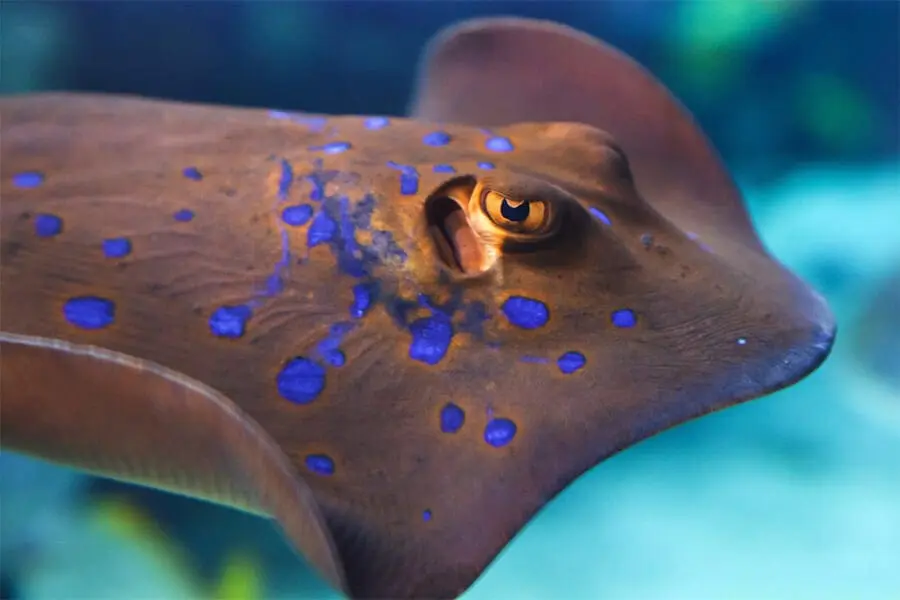

Several stingray species, like this blue-spotted ray, are near threatened.
Happy Shark and Ray Awareness Day! There aren’t any sharks at the Zoo, but you will find quite a few southern and Atlantic stingrays in our Paws On aquarium. The diamond-shaped southern stingray is typically found in the tropical and subtropical waters of the western Atlantic Ocean, Caribbean and Gulf of Mexico; while the rounder Atlantic stingray ranges from Maryland to Mexico, often venturing into freshwater rivers of Florida.
Each type of stingray is one of more than 1,200 elasmobranch species, along with sharks and skates. These fish play important roles in marine ecosystems around the world by balancing the food chain as apex predators or allowing other animals to find their prey of choice by displacing sand.
An estimated quarter of elasmobranchs and their relatives are threatened with extinction. The IUCN Red List has the southern and Atlantic stingrays listed as “of least concern” in the U.S., but overall, the species are considered “data deficient” because there is little information available on population trends.
At least nine other species of stingray are at high risk. Some western Pacific cultures value these animals as a source of protein, while others use stingray skin as strong, durable leather. Stingrays are threatened by boat strikes and entanglement in fishing gear, and they are also at risk of overfishing because they grow slowly and produce few young.
There’s a number of simple things you can do to help stingrays from our corner of the world. When at the beach or in the Indian River Lagoon, it is in the animals’ (and your) best interest to practice the “stingray shuffle,” or the act of shuffling your feet across the sand to “warn” stingrays that you are nearby. If you like to fish, be sure to properly dispose of unwanted equipment to keep lines and hooks out of the water. When dining out or grocery shopping, consult Seafood Watch to select seafood that is sustainably fished or farmed.
You can also support organizations such as Marine Megafauna Foundation—a Quarters for Conservation beneficiary from fall 2018—which works locally and globally to study these creatures, develop guidelines to mitigate human-ray interactions and educate communities about stingray conservation.
